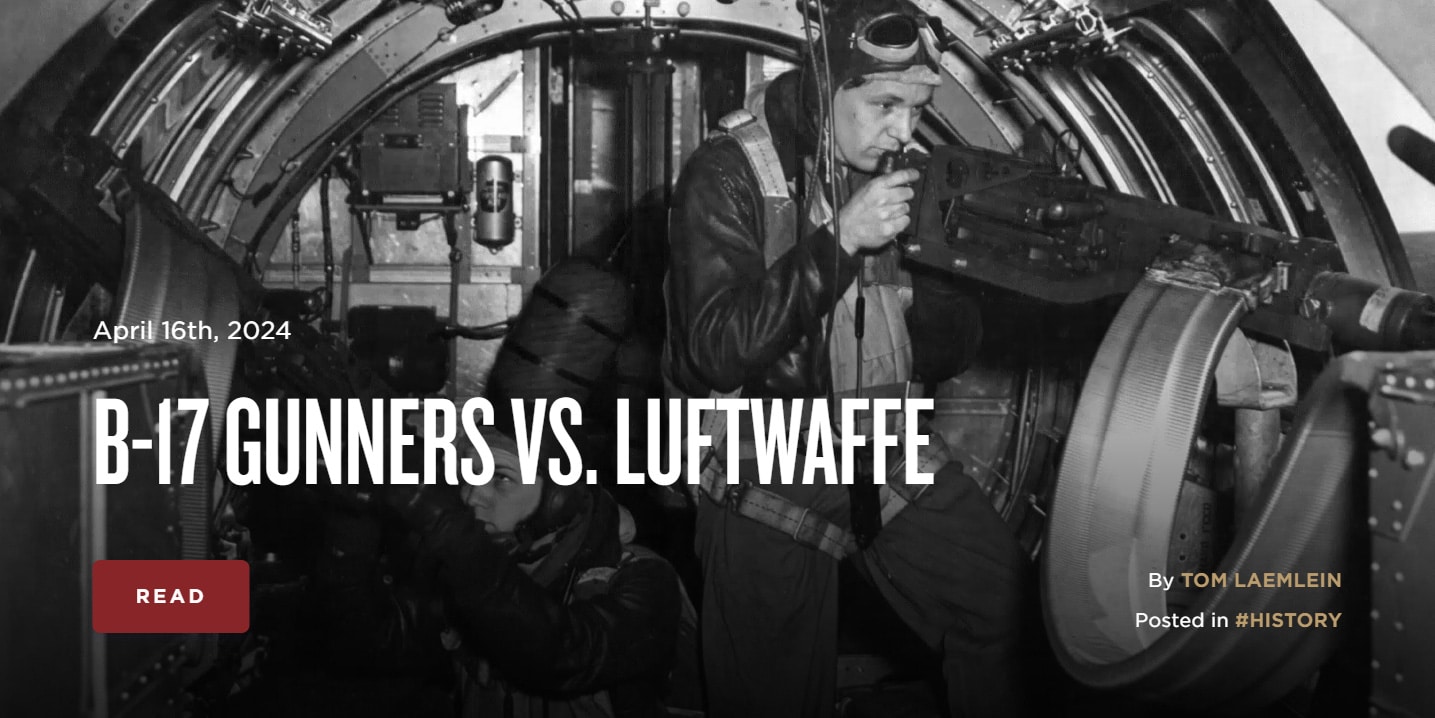Hello all, here is today's article posted on TheArmoryLife.com. It is titled “B-17 Gunners vs. Luftwaffe” and can be found at https://www.thearmorylife.com/b-17-gunners-vs-luftwaffe/.



According USAAF records/ statistics, the majority of B-17 gunners were killed by Flak rather than by Luftwaffe fighters. The same is true of B-17's being shot down. The vast majority were shot down by Flak.So how many Luftwaffe fighters did the 8AF gunners kill? And how many 8AF gunners were killed in aerial combat?




“A regular fortress”, one of them said, “a fortress with wings!”“Why, it’s a flying fortress!”
Richard Williams, reporter for the Seattle Times, upon seeing a B-17
